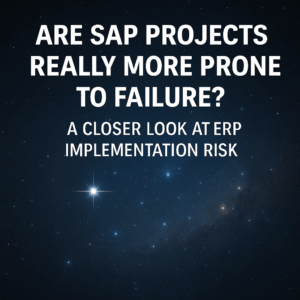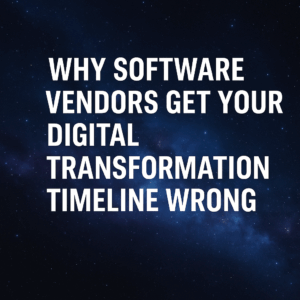Sage is a software vendor that has been around for quite some time, and they have always been focused on providing ERP solutions for small to mid-sized organizations, specifically in the manufacturing and distribution space. With three trustable software solutions in the market, Sage has been able to simplify the functionalities that many of the leading ERP software companies have built a name on.

There are three Sage solutions available:
Sage x3 software review
In this blog, we’ll take a deeper dive into the features of Sage X3.
With the roll-out of Sage X3, Sage transitioned from their original position of a “small” ERP software to opening new doors that make it a great fit for mid-market companies with more complex needs. They are a strong contender in the mid-market manufacturing and distribution space and have built their reputation based on their focus within the industry.
Many vendors position their software as a ‘one size fits all’ solution. They try to be everything to everyone, offering one software that can speak finance, accounting, inventory, supply chain, CRM, etc. While these all-encompassing options may be a good fit for the Fortune 500 companies looking toward a full scope digital transformation, industry-specific solutions often provide the most benefit to a company that needs a more refined focus.
Sage X3 has abundant capabilities that speak to different sides of a business and they are predominantly geared toward the organizations focused on distribution and supply chain management. Sage has built a name for themselves as a solid Tier 2 manufacturing ERP solution.
Another big positive to implementing Sage X3 is the fact that it is oftentimes a lower-risk, lower-cost solution relative to its competitors. By building for the Tier 2 space, Sage X3 allows for two driving benefits of the platform – flexibility and scalability. By allowing for flexibility in integration and creating a model that enables a company to grow and scale utilizing the platform, we have seen many clients reach their targeted ROI quickly by selecting Sage X3.
There are a lot of newer cloud ERP solutions geared toward the supply chain and manufacturing space, but a lot of them do not add up to what Sage X3 can provide because they lack the maturity in the market. Project management planning, raw material update automation, and nonconformance management for simplified compliance tracking are all strengths of the Sage X3 product. These elements are pillars of the manufacturing space, and the maturity in Sage’s platform has positioned Sage X3 as one of the most functionality-dense software solutions in this specific industry.
With all of this said, Sage X3 provides significant value to small and mid-sized companies. Larger and more diversified manufacturing clients may find that Sage X3’s limits in the software will limit their business. For example, the companies with global supply chains and international business needs may want to look beyond Sage to see what might be the best fit to accommodate their diversified data and operations.
Given the focus in Sage’s approach to their target audience, they have proven to be a reliable solution for many clients that opt-in for their software solutions. For that reason, Sage X3 landed on the list of Top 10 ERP Solutions for 2020. We look forward to seeing how they continue to grow and expand their capabilities while keeping their industry-specific focus.

If your team is considering Sage X3 and would like to do a more narrow, focused evaluation of your company needs in relation to Sage X3’s offerings, please feel free to contact me directly. I am happy to be a sounding board and provide insights as you dial in on your software selection.





